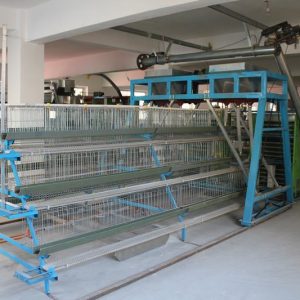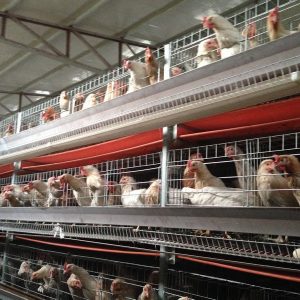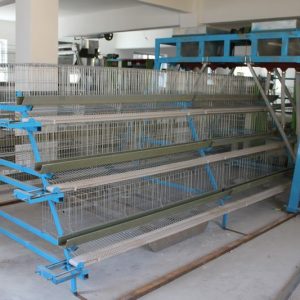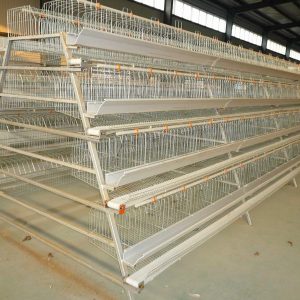
The essence of reducing the feed-to-egg ratio
Feed-to-egg ratio refers to the weight of feed consumed per unit weight of egg produced during the production process of laying hens in terms of feed conversion rate. Feed-to-egg ratio is an important indicator to measure the benefit of chicken raising, but many people blindly Pay attention to feed factors, and ignore many factors that affect feed-to-egg ratio from other aspects. Sometimes despite improving the feed formula and increasing the protein level, the feed-to-egg ratio is still unsatisfactory. There are still quite a few farmers who mistakenly believe that they use cheap feed when the price of eggs is cheap. This causes a decrease in the egg production of chickens, which is counterproductive and causes serious problems. Loss, under the same feed consumption, the higher the egg production, the lower the feed-to-egg ratio. Therefore, in laying hens raising the total egg weight and reducing feed consumption can the feed-to-egg ratio be truly reduced. The main influencing factors of egg production, feed intake and feed-to-egg ratio are as follows:
The effect of nutrition on the feed-egg ratio
+
The feed nutrition design is reasonable, the quality of the raw materials is excellent, no mycotoxin pollution, the feed utilization rate is high, and the feed-to-egg ratio is low. Conversely, if the feed is low in energy, protein, and amino acid content, the chicken’s feed intake is large, the quality of the raw materials is poor, and the feed utilization rate is low, the chicken’s feed-to-egg ratio will increase, so choose high-quality feed materials in the breeding of layers , Reasonable nutrient ratio is a prerequisite for reducing feed-to-egg ratio and increasing egg production.
The influence of stress factors on the feed-to-egg ratio
+
Stress will cause the performance, egg quality and health of laying hens to decline, and the impact on feed-to-egg ratio is also obvious. Such as lack of water, lack of feed, sudden change of feed, low temperature, high temperature, or sudden change, sudden change in light time; sudden abnormal noise; strangers or other animals entering the chicken house; changes in feeding management procedures; use of vaccines or drugs And so on, these stress factors will have varying degrees of impact on egg production. Once the stress occurs, it will cause harm to egg production, and the egg reduction and material consumption reduction caused by these stresses are not obvious, and the stress effect will continue for a period of time, then the feed-to-egg ratio will be high.
The influence of temperature and humidity on the ratio of feed to egg
+
It is generally believed that 15-23°C is the ideal temperature range for laying hen house. Every time the ambient temperature increases by 1°C, the feed consumption will drop by 1.6%. Chickens do not have sweat glands. When the temperature exceeds 30°C, they will release body heat by increasing the number of breaths, reducing feed intake by 20%-25% and egg production by 20%-30%.
Under the conditions of suitable temperature, the chickens can adapt to the relative humidity in the house in a wide range. The relative humidity is generally controlled between 45% and 70%, which has no obvious impact on its production performance. However, if the relative humidity in the adult chicken house is too high, it is easy to reduce the egg production and increase the feed-to-egg ratio.
The effect of light on the feed-to-egg ratio
+
Illumination affects the egg production rate of chickens by regulating food intake, drinking water and endocrine. The change and control of the light time during the laying period should be implemented in accordance with the requirements of light management during the pre-production stage. From 19 weeks of age, 20-40 minutes/ The increasing range of weeks will gradually extend the daylight time, reaching 16 hours and remain constant at the age of 24 to 27 weeks. Unreasonable light will cause egg production to decrease and increase feed ratio.
The effect of disease on the feed-to-egg ratio
+
Most of the pathogens of poultry diseases can cause damage to the egg cells of the reproductive system. After the disease recovers, these chickens only eat food but do not lay eggs, or the disease course is too long, and the egg production during the recovery period is slow, which will affect the overall egg production rate of the chicken. The performance of feed-to-egg ratio is relatively high; there are some chronic wasting poultry diseases that are recessive or subclinical. It is difficult to find abnormalities in the flock from the superficial observation, but the consumption of feed remains unchanged and the production of eggs is reduced. Maintained at a high level than the long-term.
The effect of feed waste on feed-egg ratio
+
About 65% of the total production cost of laying hens comes from feed, and the feed wasted in daily production accounts for about 3% to 5% of the consumption. For a chicken flock with 2000 laying hens, feed is wasted every month The value of is equivalent to the salary of a feeder, such as: rodent damage, unreasonable or damaged feeder design, insufficient number of feeder buckets for flat-raised chickens, untimely cleaning of feeder troughs, too much feed added at a time, etc., waste causing eggs The ratio is high and not easily noticeable.
The effect of low-yield or poor-quality chickens on feed-to-egg ratio
+
There will be weak chickens, sick chickens, discontinued chickens and other low-quality chickens and low-production eggs constantly in the chicken flock, so we must promptly eliminate them. Poor-quality chickens consume feed and do not lay eggs, which will affect the feed-to-egg ratio and reduce economic benefits. A non-laying hen will consume the profit of 5-10 laying hens in vain; a low-yielding chicken can consume the profit of 3-5 laying hens. During the peak period of egg production, we should eliminate chickens that have not yet started production, and we should pay attention to weed out chickens that have stopped production and chickens with low laying rates in the middle and late stages of laying. In this way, although the total number of chickens is reduced, the feed consumption is reduced, the feed-to-egg ratio is reduced, and the economic benefits will be improved accordingly.



